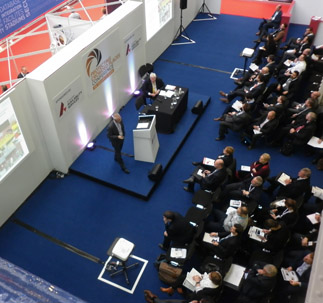How to balance effective security with acceptable, more humane security was a question for the University of Warwick academic geographer Prof Jon Coaffee, who spoke twice at the recent UK Security Expo 2016 in London.
It’s easy to have effective security, he said, by putting up bollards and gates everywhere, to stop things getting in; but this radically alters urban life, he said.
The 9-11 attacks saw a reactive approach; with fortress buildings and bollards and barriers, in a makeshift way, around buildings and public spaces. But calls came to integrate security with planning and design of the public realm, and to soften security features in the streetscape. Under the Labour Government of the 2000s, the Lord West review of counter-terrorism called for counter-terrorism (CT) to be embedded in design and planning of public places. In practice, that meant thinking about unobtrusive alternatives to visible security.
Coaffee questioned if CPTED (crime prevention through environmental design) was the right approach, because, he suggested, terrorist thinking had changed: “They don’t care if they get caught, because they may be blowing themselves up anyway,” and in that case CPTED is no use. While retrofitting security to a building or site is more expensive, and less effective, it’s difficult to determine the cost of designing in security, he said. Is it ten per cent of a building’s cost? That’s significant for a developer to add; hence it can be hard to make a business case for expensive counter-terrorism designed into the security of a building. Coaffee gave some London examples – Whitehall, Arsenal FC’s Emirates Stadium, and outside the Gherkin building – of how security, such as seats and balustrades, need not be ugly.
Coaffee pointed to a ‘trajectory’ in designing against terrorism, from a focus on visible security to a more recent move towards more invisible designs; although the recent terror attacks in Paris and Brussels have led to a re-emphasis on ‘hardened spaces’. The 2016 review for the Mayor of London by Lord Harris suggested a city where security and resilience is designed in, as part of the city’s fabric. While the official CPNI (Centre for the Protection of National Infrastructure) has a list of approved anti-terrorism products, they are mainly bollards and related planters, and very few are of the more unobtrusive style, Coaffee said.
Summing up about the future of CT design, he asked if it was even possible; and who should be responsible. Is it proportionate, and how visible; and what of that balance between effective and acceptable – and acceptable to whom.
In a separate talk on day two of the exhibition, pictured, he said we need a clearer understanding of how social media – which can be a force for good, and not, in a crisis such as a terror attack – can and cannot be used for public security. He pointed to legal, ethical and data protection issues. He summed up that the technology of urban security is fast-moving and the public is being enrolled in countering security: “We are all counter-terrorists.” But while it’s easy to say that everyone should work together, it’s actually difficult to put in place; what are the training needs, for example, especially to secure so-called ‘soft targets’?










